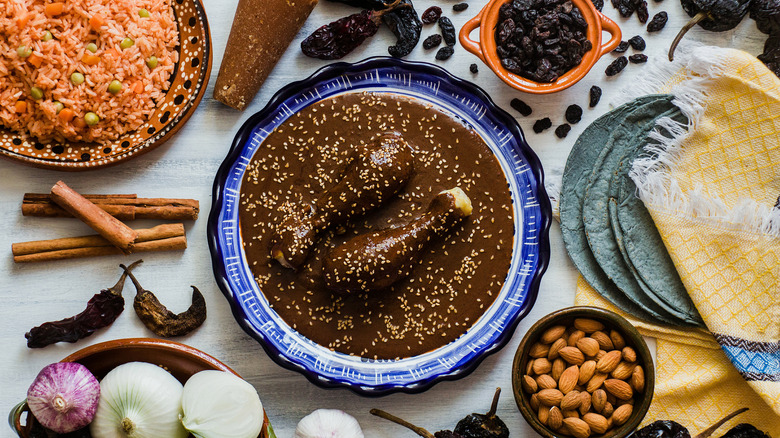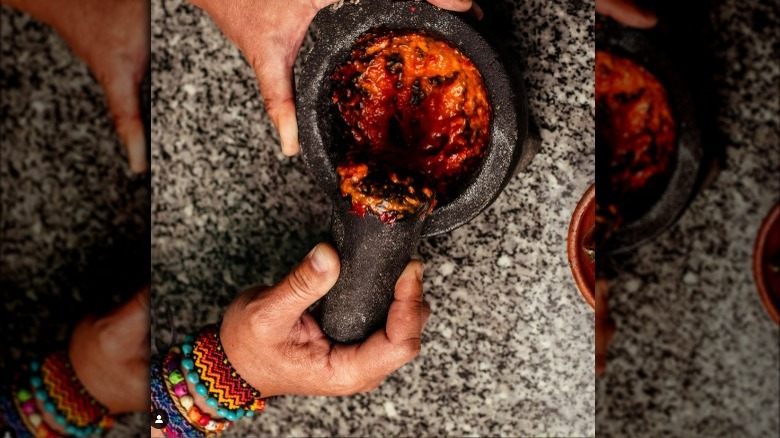Why Mole Poblano Holds So Much Significance On Cinco De Mayo
If you're looking to celebrate Cinco de Mayo in the most authentic way possible, consider digging into a meal that has a truly meaningful connection to the Mexican celebration. We're talking about mole poblano, which refers to all dishes sauced with this particular version of Mexican mole. Mole poblano is regarded by many as the "jewel of Puebla food," Mexican chef and restaurateur Zarela Martinez said in a History-produced video, and the Mexican city of Puebla is at the heart and soul of Mexican Cinco de Mayo festivities.
Specifically, Cinco de Mayo celebrates a significant military victory by Mexican armed forces over the French at a battle that took place in Puebla on May 5, 1862. Indeed, another name for Cinco de Mayo is "Battle of Puebla Day." Although many different mole sauce recipes exist and many are considered celebratory foods, only mole poblano is associated with an origin story involving Puebla.
As one version of that story goes, the multi-nuanced sauce was invented in the 1600s by nuns in a Puebla convent, in anticipation of a visit by a Spanish dignitary (although they may have been guided by pre-Colombian and/or Spanish tradition). By May 5, 1862, mole poblano had already become a beloved Puebla favorite. So it stands to reason that the people of Puebla might have wanted to celebrate this particular military victory against France by indulging in mole poblano's richness. In any event, through the passage of time, mole poblano has, in fact, become a Battle of Puebla Day tradition.
In Mexico, Cinco de Mayo is actually a Puebla-centric celebration
Many outside Mexico believe Cinco de Mayo commemorates Mexican independence. But Mexican Independence Day, which falls on September 16, is something else entirely. Moreover, Mexico's victory over the French on May 5, 1862, didn't even come close to establishing Mexican independence vis-a-vis France. Rather, the Battle of Puebla was merely France's first strike in what would become a protracted military campaign to take over Mexico. Despite Mexico's victory that day over the French, it would take until 1867 before Mexico, as a nation, would manage to rid itself of its French invaders fully.
What the Mexican celebration of Cinco de Mayo commemorates, therefore, is not Mexican independence, but rather, one particularly morale-building triumph of the then-ill-prepared Mexican forces against the well-organized French army. Since the battle was fought and won in Puebla, that is where the first celebration occurred. Since Puebla is where people felt and have continued to feel a sense of pride over the events of that day, Mexican celebrations of Cinco de Mayo still happen primarily in Puebla, as opposed to all throughout the country. And since mole poblano is a favorite celebratory dish in Puebla, it figures prominently in Cinco de Mayo celebrations.
For an even more authentic take on Cinco de Mayo, consider enjoying your mole poblano with a shot of pasita. Pasita is a raisin-flavored liqueur that many say is unique to Puebla — although fans of Italy's raisin wine passito might beg to differ.

